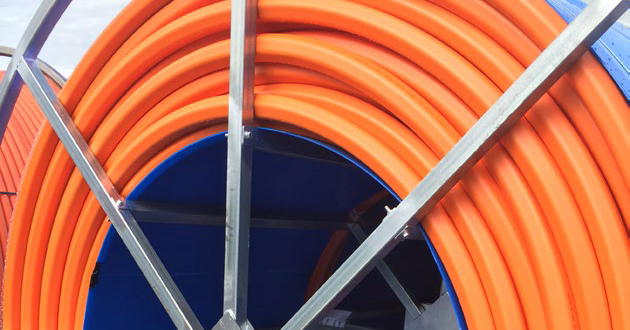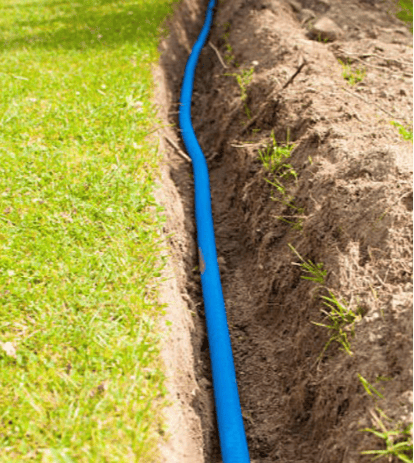Today’s world relies on digital solutions and reliable, gigabit-speed internet connections. The conduit systems that can support and protect delicate fiber cables are in high demand. Microduct, which has been used for decades in Europe and Asia, is quickly becoming the preferred choice for housing telecommunications and energy cables in the U.S. It is an integral part of maintaining a secure, fast, and reliable network in hospitals, businesses, and federal buildings. Further, upgrading to microduct can help schools promote and use remote learning.
Microduct is small-diameter conduit that is primarily used to house fiber cables. While traditional conduits usually have an inner diameter of 75 to 100 mm, microduct can be as narrow as 5 mm. It is made of a material that’s both more flexible and durable than PVC and other traditional duct materials. These factors and others have made the world reconsider conduit deployment and materials.
The cable conduit systems currently in place are aging quickly and will have to be replaced with a more reliable and durable system that can support future technology. Microduct can satisfy this need both in the short and long term. It can be quickly and easily deployed into existing conduits or replace a traditional conduit entirely. Despite its smaller size, microduct can house up to 144 fibers, which is a far greater capacity than the traditional duct.
However, with every product comes a major decision: is this product worth investing in? Today, many businesses are turning to Environmental, Social and Governance (ESG) principles to determine whether a new service or product is worth the investment. They consider whether the product is beneficial to the environment and how the product affects society. Microduct fits the ESG bill in more ways than one.
Cleaner Production, More Efficient Transport
Microduct is made of high-density polyethylene (HDPE). This plastic polymer is primarily composed of ethylene and is more durable than PVC, PET, and PP conduits. In fact, the material is so durable that microducts are both thinner and narrower than traditional ducts. It takes less resin to make microduct than traditional conduit, reducing cost and energy usage from manufacturing both the resin and the conduit.
Another benefit to HDPE duct is its unique flexibility. Unlike other conduit materials, HDPE microduct can be coiled for transportation, allowing trucks to carry larger loads of the microduct material. Depending on the application, the HDPE conduit could even be bent, virtually eliminating the need for fittings. With the reduced need for material transportation, companies reduce their transportation costs and fuel emissions into the air.
Faster, Less Disruptive Deployment
By far, the most common complaint about construction is that the jobs take far too long to complete and cause a huge traffic mess. Traditional duct conduit installation can take months. Microduct installation, however, takes far less time than traditional conduit installation because of its flexibility, size, and burial requirements.
Reeled or coiled HPDE microduct can be delivered in greater quantity than traditional conduit materials, so fewer tucks will be present on the jobsite. Further, the project can be completed in fewer deliveries. This reduces the chance of material delivery delays while simultaneously increasing onsite productivity.
When it comes to installation, microduct can be buried at shallower and narrower depths than traditional conduit materials. The most common way to install microduct is in mini or micro-trenches, which can be as narrow as 0.5-inches and as shallow as four feet. In contrast, traditional trenching is usually between one and two feet and up to 60 feet deep. With a considerably smaller trench, construction crews can complete micro-trenching up to five times faster than traditional trenching.
Deploying the new microcable is also far faster than traditional duct, reaching speeds up to 200 feet per minute. With the decreased completion time and size, installing microduct allows traffic flow to return to normal far more quickly.
Environmental Benefits and Beyond
Microduct offers many benefits over traditional ducts. It is more cost-effective, has a greater capacity, promotes healthier environmental practices, improves network connections and reliability, and prepares companies for the future.
MicroPath™ is United Poly Systems' exclusive microduct piping system. Each run of the pipe has built-in micro ducts that run fiber cabling in a tight, safe casing. Extra ducts can be left open, allowing for future expansion. MicroPath can be very narrowly trenched to avoid traffic closures. It is available in almost any color including translucent with tape, detectable tape, and with indoor options. UPS can provide a full line of microduct cabling for new communication installations as well as infrastructure upgrades.
About United Poly Systems
United Poly Systems produces quality HDPE pipe in diameters from ¾-in. to 26-in. IPS, 4-in. to 24-in. DIPS and ¾-in. to 2-in. CTS for use in many industries including telecommunications, power utility, water, electrical and oil and gas. The market for HDPE pipe continues to expand as initiatives to improve, repair and expand the country’s infrastructure are implemented.
Our off-the-shelf HDPE conduit/pipe is available in a variety of sizes, colors, dimensions and lengths, with or without stripes. We also offer fully customizable HDPE conduit options. In addition, piping can be customized with a ribbed interior (to maximize the distance cable may be pulled or jetted), pull tape, or a lubricated interior (for easier installation).
Success at UPS can be attributed to our vast experience, extensive client relationships, state-of-the-art manufacturing and quality processes. Our agile business model that allows UPS to quickly meet customers’ needs without the overhead expenses that are incurred by many of the larger producers in the industry.
Conveniently located in Springfield, Missouri and Albuquerque, New Mexico, United Poly Systems can provide quick delivery to a majority of the U.S. market.


